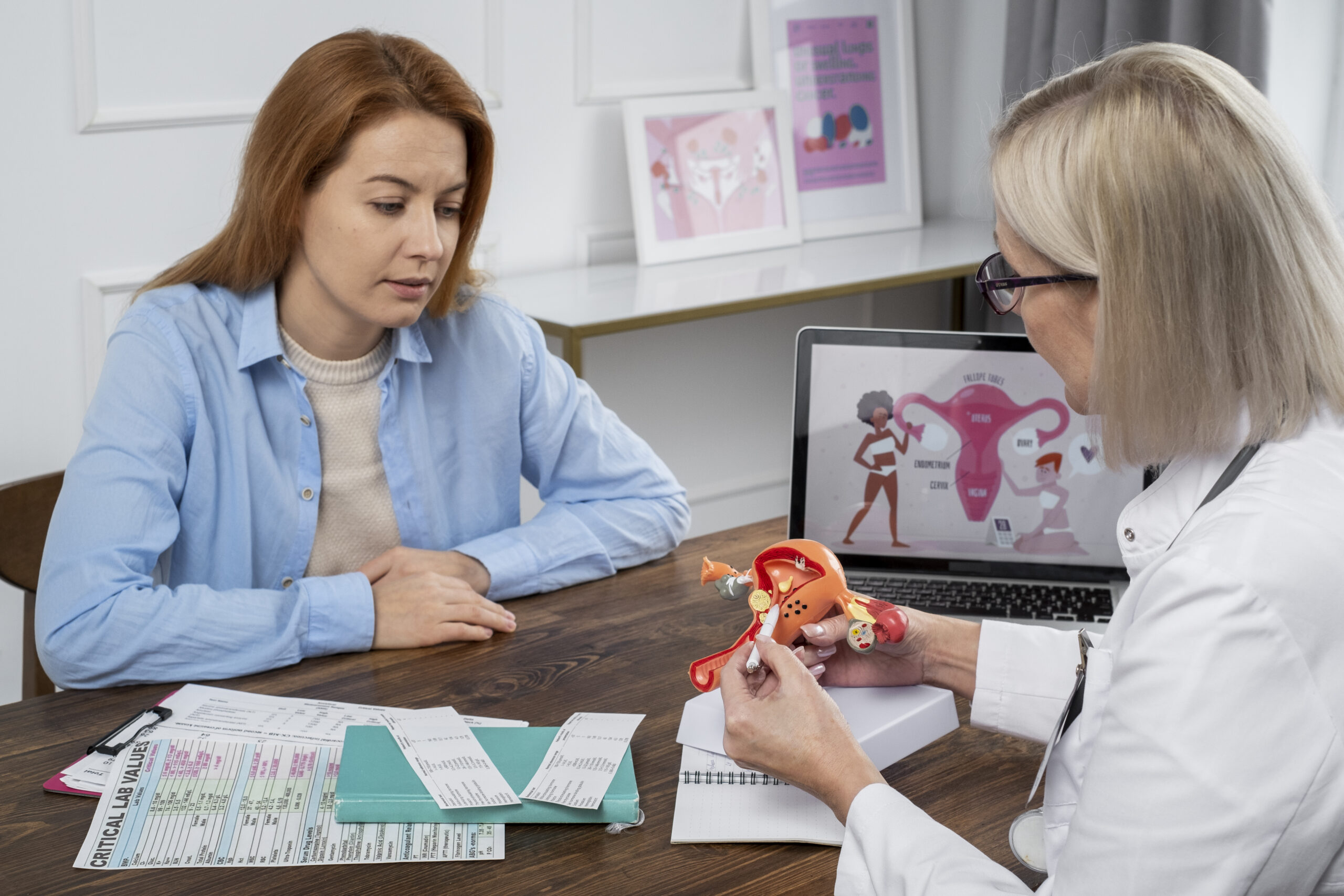Fibroids and Fertility: What Women Should Know
Reviewed by Shrenik Shah, MD, Vascular & Interventional Radiologist and Medical Director of Southwest Atlanta Vascular Care

For many women, planning a pregnancy is an exciting milestone. But if you’ve been diagnosed with uterine fibroids, it’s natural to wonder how they might affect your ability to conceive and carry a healthy pregnancy.
Fibroids and fertility are closely connected, and their impact depends on the size, number, and location of the fibroids. The good news? With early evaluation and the right treatment plan, many women with fibroids go on to have successful pregnancies.
What Are Fibroids?
Fibroids, also called uterine leiomyomas or myomas, are noncancerous growths that develop in the muscular wall of the uterus. They are incredibly common — affecting up to 70–80% of women by age 50 — though not all fibroids cause symptoms.
Fibroids are classified based on where they grow:
- Submucosal Fibroids – Grow into the uterine cavity; most likely to interfere with implantation and pregnancy.
- Intramural Fibroids – Grow within the uterine wall; can distort the shape of the uterus and affect fertility.
- Subserosal Fibroids – Grow on the outside of the uterus; less likely to directly impact fertility.
How Fibroids Can Affect Fertility
Fibroids can affect fertility in different ways:
- Fibroid-Related Infertility
- Blocking the fallopian tubes
- Distorting the uterine cavity
- Preventing embryo implantation
- Changes in the Uterine Environment
Fibroids can alter the lining of the uterus, making it harder for an embryo to implant. - Increased Risk of Miscarriage
Women with fibroids that distort the uterine cavity face a higher risk of early miscarriage.
Fibroids and Pregnancy Complications
Even after successful conception, fibroids may contribute to pregnancy challenges, such as:
- Preterm labor from uterine irritation or reduced space
- Placental abruption in rare cases if the placenta attaches near a fibroid
- Fetal growth restriction if large fibroids limit space for the baby
- Breech position due to reduced fetal movement
- Cesarean delivery, which is more common in women with large fibroids
Still, it’s important to remember that many women with fibroids have healthy pregnancies, especially when their care team monitors them closely.
When to See a Specialist
If you’re planning pregnancy and have fibroids, talk to a specialist if you experience:
- Difficulty conceiving after 6–12 months
- Two or more consecutive miscarriages
- Heavy, prolonged menstrual bleeding
- Severe pelvic pain or pressure
An ultrasound or MRI can help determine the size, location, and number of fibroids, guiding your treatment options.
Fertility-Preserving Treatments for Fibroids
Women with fibroids who want to maintain fertility have multiple treatment options. The best choice depends on your fibroid type, symptoms, and family goals.
Myomectomy
Myomectomy is a surgical procedure that removes fibroids while preserving the uterus. It has traditionally been the most common approach for women planning pregnancy, especially if fibroids distort the uterine cavity. Myomectomy is typically performed by a gynecologist and may require a longer recovery period than non-surgical treatments.
Uterine Fibroid Embolization (UFE)
UFE is a minimally invasive, non-surgical treatment performed by a vascular & interventional radiologist. Using a small catheter, the blood supply to fibroids is blocked, causing them to shrink.
- UFE preserves the uterus and provides lasting relief from fibroid symptoms.
- It avoids the risks of major surgery and has a shorter recovery time.
- While myomectomy has historically been preferred for women actively pursuing pregnancy, growing evidence shows that many women are able to conceive and carry healthy pregnancies after UFE.
At Preferred Fibroid, we specialize in UFE and work closely with referring physicians to ensure that every woman understands her options. For some, myomectomy may be appropriate. For others, UFE offers a modern, minimally-invasive alternative that aligns with their fertility goals.
Medication
Hormone-regulating medications may temporarily shrink fibroids or reduce symptoms. However, they are generally not long-term fertility solutions.
Lifestyle and Self-Care for Fibroid Health
Lifestyle changes cannot eliminate fibroids, but they can support overall reproductive health:
- Balanced diet – Eat more fruits, vegetables, and fiber; limit red meat and processed foods
- Maintain a healthy weight – Excess body fat can increase estrogen, which fuels fibroid growth
- Manage stress – High stress may affect hormone balance, indirectly influencing fibroid development
Preparing for Pregnancy with Fibroids
If you have fibroids and want to conceive:
- Get a thorough evaluation with imaging
- Discuss all treatment options with your care team
- Allow recovery time after treatment before trying to conceive
- Stay closely monitored throughout pregnancy for best outcomes
Key Takeaways
- Fibroids are common and may affect fertility depending on their size and location.
- Both myomectomy and UFE are uterus-preserving options; myomectomy is often considered first-line, but UFE is a proven, minimally invasive alternative.
- The best choice depends on your personal goals, symptoms, and medical history.
- With the right care plan, many women with fibroids successfully conceive and carry healthy pregnancies.
FAQs
Yes. Fibroids that block the tubes or distort the uterine cavity can interfere with implantation and increase miscarriage risk.
Absolutely. Many women with fibroids conceive and carry healthy pregnancies with proper care.
Traditionally, myomectomy has been the most common fertility-preserving option. However, UFE is also a uterus-preserving, minimally-invasive procedure, and some women successfully conceive after undergoing it.
Yes, but it requires careful patient selection. Some women go on to have successful pregnancies after UFE. A consultation with both an interventional radiologist and gynecologist can help determine the best option for your goals.
Medical Review
This article has been reviewed by Shrenik Shah, MD, Vascular & Interventional Radiologist and Medical Director of Southwest Atlanta Vascular Care.
